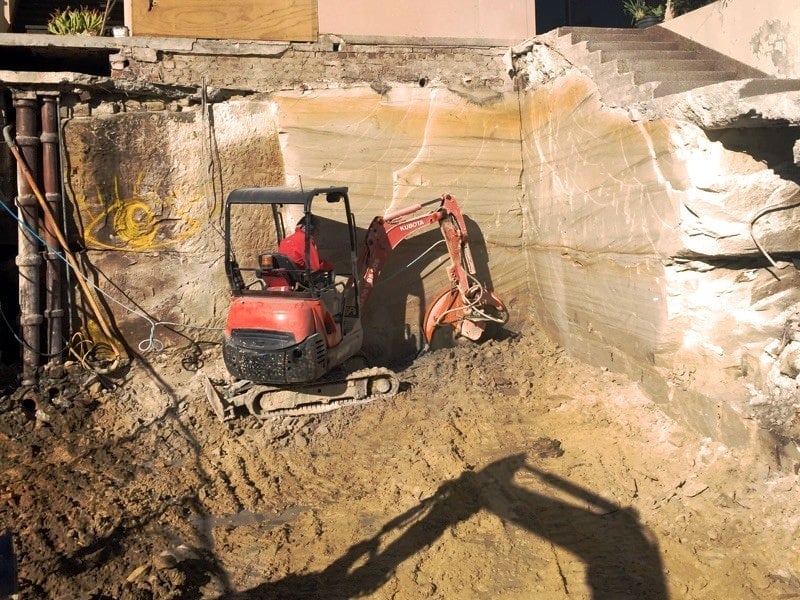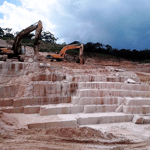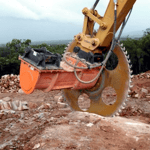
Excavation

Excavation
The word "excavation" covers a wide range of operations such as; trenches, basements, carparks, footings, swimming pools. The scale varies from multi-storey building sites to single residence dwellings. The material to be excavated varies widely with location - from soil to very hard rock.
There are often limitations on access to the sites, which will effect the size of excavator that can be brought in.
Rocksaws can be used for removing hard rock where hammers are ineffective. The rocksaw cuts slots in the rock, and the hammer is used to break the cut rock away. The number of cuts required depends on the how easily the rock can be broken.
In softer rock, they are often used for boundary cutting, providing a smooth regular wall.
For cable trenches in soft rock such as sandstone and limestone, tungsten-carbide saws can be very successful by producing a cut wide enough for the cable to be laid with a single cut. In hard rock, twin-blade diamond rocksaws can cut two parallel slots in the rock at the required distance apart, and then the material must be broken off and removed.
From some building sites, it is possible to remove blocks of stone, and reuse them as dimensional stone on the site, or elsewhere. This converts waste material which is expensive to dispose of, to a valuable building material.
Recommended Equipment
High Performance, deep cuts

Large Blade Diamond Rocksaws
- Excavators 30-70 tonnes
- High-Torque and high-flow capabilies
- Cut materials from 50 MPa
- blade brake and through-hub water distribution

Tungsten-Carbide Rocksaws
- Excavators 8-60 tonnes
- Rock hardness up to 60MPa
- No cooling water required
- on-site tip replacement

Large Blade Omnicut® Rocksaw
- Excavators 8-150 tonnes
- On-site tip replacement
- Very fast cutting rates
- Robust blade construction
Tight-Access Excavation
Access to backyards and underhouse spaces can be limited to less than 1m, which means that only mini excavators can be used. But mini excavators can often lack the power to effectively hammer through hard rock or concrete. Also, hammering can cause damage through vibration to existing structures.
Excavator rocksaws provide a solution. With an excavator rocksaw, the rock can be cut and then more easily broken and removed.
The finished wall is smooth and can even be used to feature the grain of the rock.
The rock can be reused for site works in the form of landscaping material - for example retaining walls and stairways.
Diamond rocksaws on mini-excavators can be used for cutting reinforced concrete for demolition within buildings, or swimming pools.
Recommended Equipment

Large Blade Diamond Rocksaws
- Excavators 30-70 tonnes
- High-Torque and high-flow capabilies
- Cut materials from 50 MPa
- blade brake and through-hub water distribution
